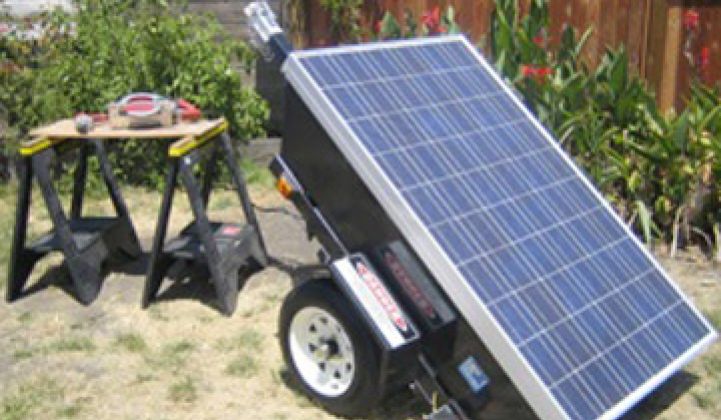Distributed power generation (DG) has been a hot topic recently. With growing concerns over utility grid capacity and reliability, the role of point-of-use power generation technologies is increasingly important. While definitions of what comprises DG vary based on location, size, grid connectivity, and other factors, one consistent defining characteristic of DG is that it is power generation that is not centrally controlled by utility companies.
Point-of-use for local sustainability
When power is generated locally, at or near the point-of-use, the end user is less dependent on the utility grid for reliability and has greater control over the cost of generation. Locally generated power is nearly always cleaner (who wants to live next to a coal-fired plant?) and more efficient than grid power due to short transmission distances. An important side benefit of point-of-use generation is that it encourages greater awareness of electricity usage. Since users are likely more aware of the capacity limitations of their power source and can’t turn to the grid for ‘unlimited’ power, they tend to modify their behavior and reduce their electricity consumption to fit within the local power budget available. This results in more sustainable and economically beneficial power usage. Where the distributed power source is generated from renewable resources, it will also result in a much lower carbon footprint as well as fewer health impacts due to industrial pollutants.
Many applications for portable distributed generation
But lost amid the discussion of the pros and cons of distributed generation is an important subset of DG: portable power. There is a wide set of applications for non grid-tied portable power, including remote construction and maintenance services, agricultural irrigation, outdoor recreation, emergency back-up power, rural community development (particularly in the developing world), and tactical military operations, among others. These are all applications where power may be needed and no grid exists. Historically, the only viable option for providing power in remote locations has been diesel or gasoline combustion engine generators. However, a new class of sustainable energy products has recently become commercially available to meet the needs of portable, distributed power generation and storage.
Traditional utility power solutions that use coal, natural gas, and nuclear are financially and logistically impractical in remote environments and at small scale. Renewable options such as hydro electricity, geothermal, and biodiesel are insufficient for portable applications, as they require fixed power sources or fuel transportation. But with recent efficiency improvements and price reductions of solar and wind turbine technologies, renewable power solutions are becoming not just viable, but economically attractive when compared with traditional fuel-based technologies. After taking into account fuel, transportation, and maintenance expenses, in addition to the shorter life span of combustion technologies when compared with renewables, the total cost of ownership for a portable renewable power solution is considerably less. Not only are these solutions more cost effective, they have intangible benefits such as being non-polluting, operating in silence (who wants to be standing next to a pollution-spewing diesel generator putting out 65 db? – and that's a “Whisper” model), and being considerably easier to maintain and operate.
The ‘killer app’ for portable renewables
And when examining critical applications such as tactical military operations, pollution and cost aren’t even significant considerations. The big issue is security. One in every 24 fuel convoys in Afghanistan results in a casualty. It is very easy for insurgent groups to spot a large group of trucks delivering thousands of gallons of diesel fuel to a forward operating base, and attacks on these convoys are very common. The U.S. military has declared a critical need to reduce fossil fuel dependency for both tactical security, and, in the long run, national security. The military consumes over 90 percent of the oil used by the U.S. government with a fifth of that, at least 90 million gallons per month, consumed in Afghanistan and Iraq. Even a modest reduction in this fuel usage for tactical operations can save many lives each year in these operations -- and how do we value that?
Portable distributed power sources that leverage renewable resources will not alone solve the many problems related to grid capacity enhancement, demand management, or global warming. But for a meaningful list of applications, these types of solutions are contributing to an overall reduction in fossil fuel consumption and associated carbon output, increasing military and national security, and empowering individuals with a rich new source of portable power that doesn’t depend on centralized generation and control.
Portable power fueled with renewable energy is empowering, practical, economical -- and necessary.
***
Jeff Lipton is President and CEO of Coyle Industries, Inc., a developer of portable solar power generation systems. He is based in Berkeley, California.



